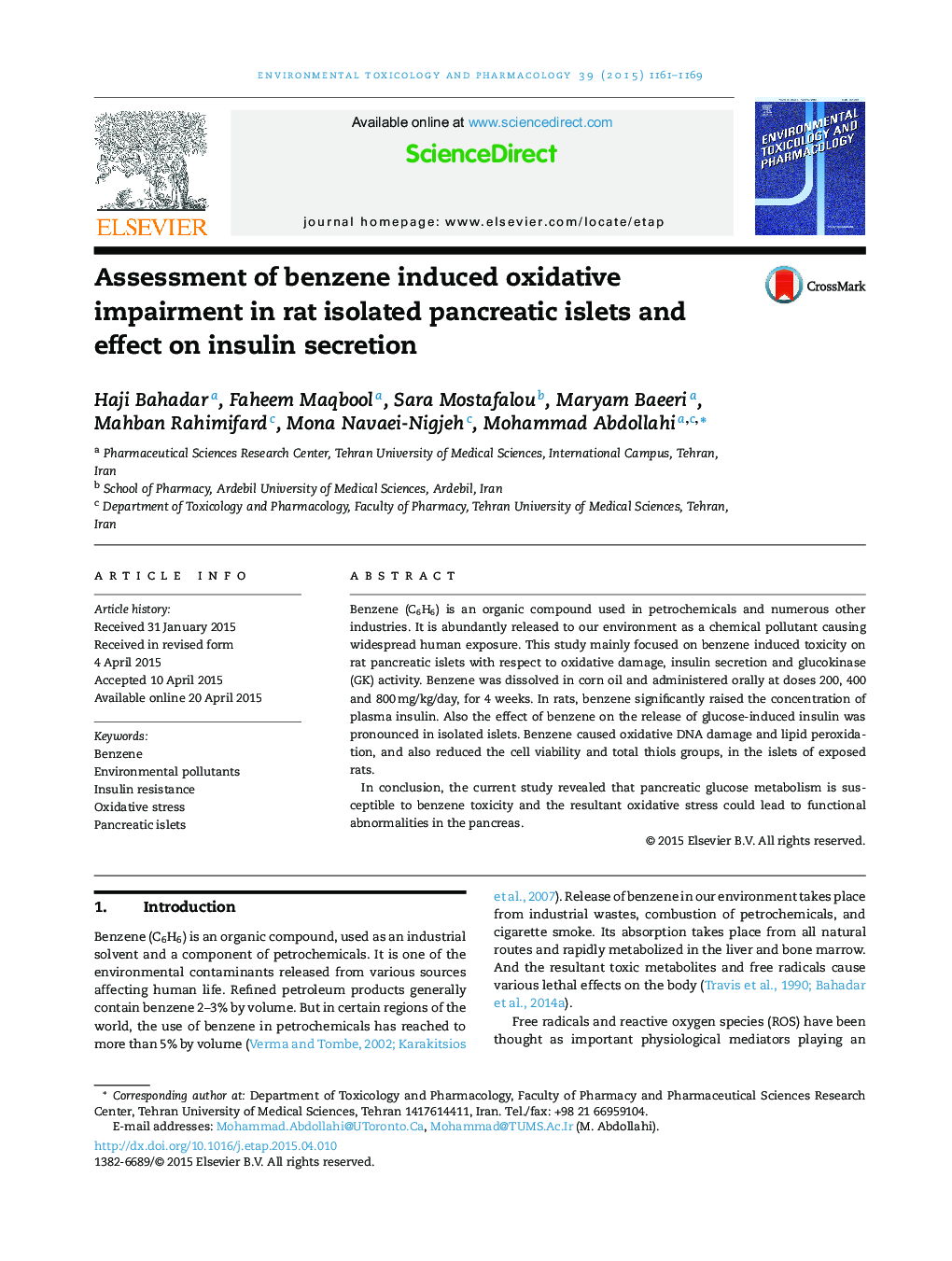| کد مقاله | کد نشریه | سال انتشار | مقاله انگلیسی | نسخه تمام متن |
|---|---|---|---|---|
| 2583153 | 1130680 | 2015 | 9 صفحه PDF | دانلود رایگان |
• Subchronic benzene exposure causes increased plasma insulin.
• Benzene metabolites and free radicals cause oxidation of macromolecules in pancreatic islets.
• Reduced cell viability and decreased MMP indicates the involvement of mitochondria as one of the molecular mechanisms in benzene induced toxicity in pancreatic islets.
• The antioxidant system of pancreatic islets is susceptible to the benzene toxic effects.
Benzene (C6H6) is an organic compound used in petrochemicals and numerous other industries. It is abundantly released to our environment as a chemical pollutant causing widespread human exposure. This study mainly focused on benzene induced toxicity on rat pancreatic islets with respect to oxidative damage, insulin secretion and glucokinase (GK) activity. Benzene was dissolved in corn oil and administered orally at doses 200, 400 and 800 mg/kg/day, for 4 weeks. In rats, benzene significantly raised the concentration of plasma insulin. Also the effect of benzene on the release of glucose-induced insulin was pronounced in isolated islets. Benzene caused oxidative DNA damage and lipid peroxidation, and also reduced the cell viability and total thiols groups, in the islets of exposed rats.In conclusion, the current study revealed that pancreatic glucose metabolism is susceptible to benzene toxicity and the resultant oxidative stress could lead to functional abnormalities in the pancreas.
Figure optionsDownload as PowerPoint slide
Journal: Environmental Toxicology and Pharmacology - Volume 39, Issue 3, May 2015, Pages 1161–1169
